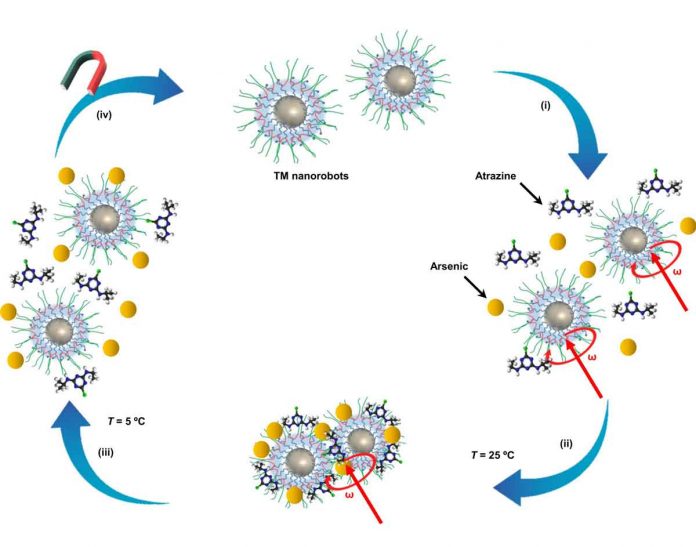Scientists have developed nanorobots capable of removing heavy metals from polluted water. The study has been published in the journal Nature Communications. Scientists described their nanorobots and how well they worked when tested.
Previous research has shown that heavy metals make their way into the water table through landfill leakage. It mimes operations and industrial dumping. Heavy metals must be removed from water sources. Current methods call for complicated multi-step procedures to remove them. In the new study, the researchers report a possible alternative which is nanorobots.
They developed thermosensitive magnetic nanorobots capable of bonding with heavy metals under certain circumstances. They can also release them under others. The nanorobots were made using a pluronic tri-block copolymer. They were made as an attractant and iron oxide to allow for control via magnetic fields. The copolymer is a temperature-sensitive PTBC. The material bonds with heavy metals, when placed in cool water.
When placed in warm water, the bonds relaxed. It allowed the metals to separate from the material. This means that a group of the nanorobots could be placed into a sample of cool water. There they would disperse naturally and bond with any heavy metals they encountered. The nanorobots could be corralled using a magnetic field to a separate site where the water could be heated. This allows the nanorobots to be reused.
Scientists tested their tiny robots by adding heavy metals such as arsenic to a tank of water. They dumped in a bunch of their nanorobots. They let the sample sit 100 minutes as the nanorobots collected the metals. They collected the nanorobots and measured how much of the heavy elements had been removed from the water. The result was approximately 65%. Scientists noted that their work is still in a preliminary phase. They are planning to continue testing their nanorobots to find out if they might be used in actual real-world settings.

